Agitator Tank
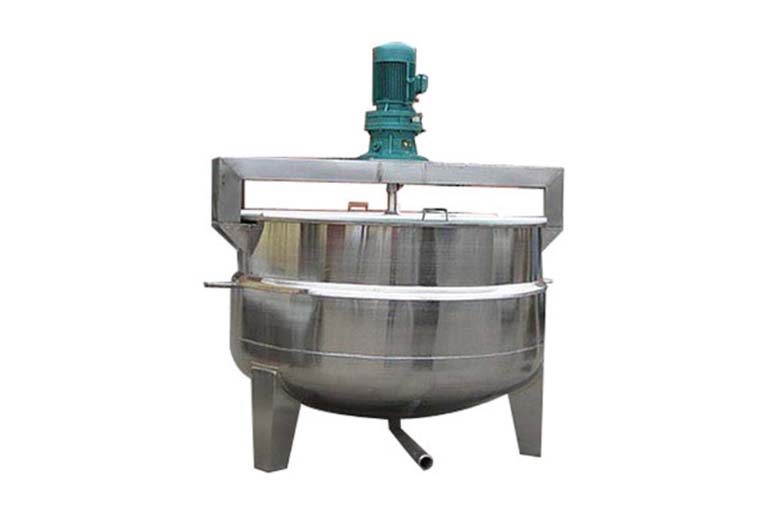
An agitator tank is a tank that contains a rotating impeller that is used to mix the contents of the tank. The impeller rotates at a controlled speed, which imparts energy to the contents of the tank, causing them to mix.
Understanding the Operation of Mixing Tanks
Mixing tank through mechanical agitation to produce fluid movement, so that the material in the tank to achieve adequate mixing, homogenization, dissolution, suspension, reaction or heat transfer. The purpose of agitation is to promote the uniform distribution of ingredients, improve the efficiency of the reaction or to maintain the consistency of the material.
How to choose the material of agitator tank?
Comparison table between different mixing tank materials
Here is a table of the most common materials used for agitator tanks, along with their pros, cons and application.
| Material | Pros | Cons | Application |
| Stainless steel | Resistant to corrosion, can withstand a wide range of temperatures, versatile | More expensive than other materials | General purpose, water treatment |
| Carbon steel | Less expensive than stainless steel, still resistant to corrosion | Not as resistant to corrosion as stainless steel | General purpose |
| Polyethylene | Resistant to corrosion and chemicals, non-metallic | Not as strong as other materials, not as versatile | Food and beverage, water treatment |
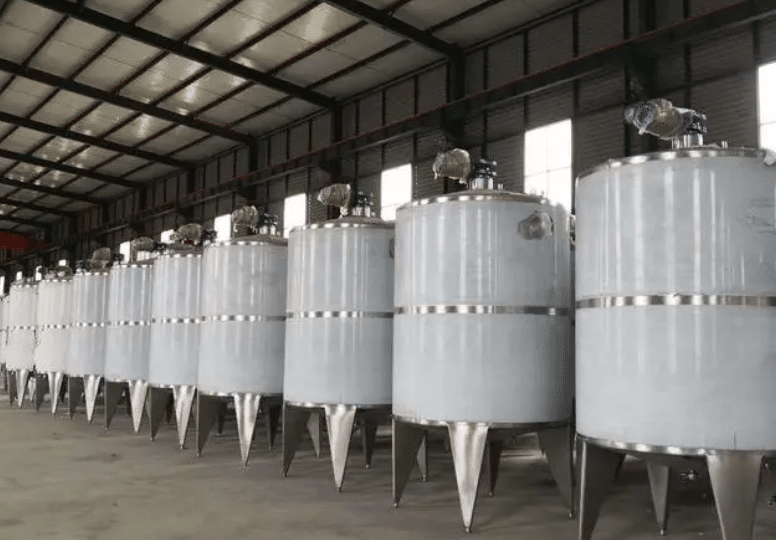
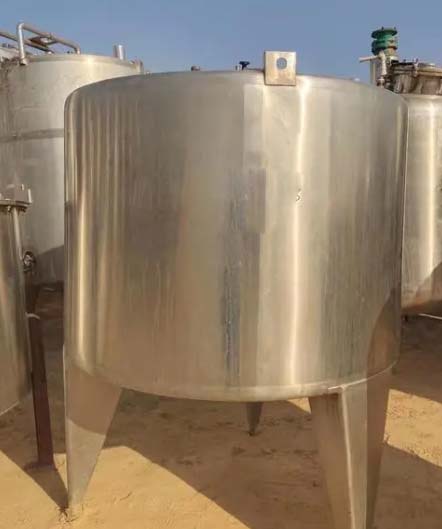
Factors to consider when selecting material for mixing tanks
Here is a table of the factors that should be considered when selecting the material for an agitator tank:
| Factor | Description |
| Type of material | The material that will be mixed in the tank, the viscosity of the material, and the temperature of the material will all affect the material selection. |
| Mechanical properties | The material should be strong enough to withstand the forces that will be generated by the impeller. |
| Thermal conductivity | The material should be able to transfer heat away from the impeller to prevent overheating. |
| Surface finish | The surface finish of the material should be smooth to prevent the buildup of material on the tank walls. |
Installation Method Of Agitator Tank
Some routine steps
- Select the mounting location. The agitator tank should be mounted on a level surface that is strong enough to support the weight of the tank and the contents.
- Install the mounting hardware. The mounting hardware will vary depending on the type of tank and the mounting location.
- Install the agitator. The agitator should be installed according to the manufacturer’s instructions.
- Connect the power. The agitator tank should be connected to a power source that is compatible with the motor.
- Check the operation. Once the agitator tank is installed, it should be checked to make sure that it is operating properly.
Some additional notes
- The size of the tank. The size of the tank will determine the size of the mounting location and the amount of power that is required.
- The weight of the tank. The weight of the tank will determine the strength of the mounting location.
- The type of material. The material of the tank will determine the type of mounting hardware that is required.
- The environment. The environment in which the tank will be installed will determine the type of seal that is required.
The following are some of the most common installation methods for mixing tanks
- Flange mounting: This is the most common mounting method for agitator tanks. The tank is flanged to a mounting plate, which is then bolted to a level surface.
- Base mounting: This method is used for tanks that are too large or heavy to be flanged. The tank is mounted to a base that is then bolted to a level surface.
- Suspended mounting: This method is used for tanks that need to be raised or lowered. The tank is suspended from a frame or gantry that is supported by a level surface.
What steps are agitator tanks typically used for water treatment applications?
Agitator tanks are used in many parts of water treatment, but they are most commonly used in the following areas:
- Rapid mixing: Mixing tanks are used in the rapid mixing stage of water treatment to ensure that the coagulant is evenly distributed throughout the water. This is important because the coagulant helps to remove impurities from the water.
- Flocculation: Mixing tanks are also used in the flocculation stage of water treatment to help the coagulant clumps, or flocs, to form. Flocs are important because they help to remove impurities from the water.
- Sedimentation: Mixing tanks can also be used in the sedimentation stage of water treatment to help the flocs settle to the bottom of the tank. This is important because it allows the clear water to be separated from the flocs.
- Filtration: Mixing tanks can also be used in the filtration stage of water treatment to help the filter media to be evenly wetted. This is important because it allows the filter media to remove impurities from the water.
Some benefits of using agitator tanks
- Uniform mixing: Mixing tanks can mix the contents of the tank evenly, which is important for many processes.
- Increased efficiency: Mixing tanks can increase the efficiency of many processes by reducing the amount of time and energy required to mix the contents of the tank.
- Improved safety: Mixing tanks can help to improve safety by reducing the risk of spills and leaks.
If you are looking for a way to mix the contents of a tank evenly in water treatment, a mixing tank is a great option. They are a versatile and efficient way to mix a variety of materials.
Agitator tank can be used with a variety of equipment
- Motor: The motor is used to power the impeller. The motor can be either electric or pneumatic.
- Gearbox: The gearbox is used to reduce the speed of the motor. This is necessary in many applications, as the impeller would rotate too fast if it were directly connected to the motor.
- Seal: The seal is used to prevent leaks between the tank and the motor.
- Baffles: Baffles are used to improve the mixing efficiency of the agitator tank. They help to prevent the contents of the tank from spinning in a vortex.
- Heater: A heater can be used to heat the contents of the tank. This is often done in conjunction with mixing, as it allows the ingredients to be mixed and heated at the same time.
- Cooler: A cooler can also be used to cool the contents of the tank. This is often done after heating, as it allows the ingredients to be cooled down quickly and evenly.
In addition to these pieces of equipment, agitator tanks can also be used with a variety of other equipment, such as dosing pumps, valves, and sensors. The specific equipment that is used with an agitator tank will depend on the specific application.
For example, in a chemical plant, an agitator tank might be used with a pump to transfer the contents of the tank to another tank or to a process unit. The agitator tank might also be used with a valve to control the flow of the contents of the tank. In a food processing plant, an agitator tank might be used with a sensor to monitor the temperature of the contents of the tank.
How to install the mixer into the agitator tank?
Here are the steps on how to install an agitator into a mixing tank:
- Inspect the agitator and the mixing tank. Make sure that the agitator and the mixing tank are compatible. The agitator should be the correct size for the mixing tank, and the mounting hardware should be compatible with the tank.
- Clean the mixing tank. The mixing tank should be clean and dry before the agitator is installed. This will help to prevent leaks and contamination.
- Install the mounting hardware. The mounting hardware will vary depending on the type of tank and the mounting location. Follow the manufacturer’s instructions to install the mounting hardware.
- Install the agitator. The agitator should be installed according to the manufacturer’s instructions. Make sure that the agitator is aligned correctly and that the mounting hardware is tight.
- Check the operation. Once the agitator is installed, it should be checked to make sure that it is operating properly. The agitator should rotate smoothly and without vibration.
Here are some additional safety precautions to take when installing an agitator into a mixing tank:
- Make sure that the power is off before you begin the installation. This will help to prevent electrical shock.
- Use the correct tools for the job. This will help to prevent damage to the agitator or the mixing tank.
- Be careful not to overtighten the mounting hardware. This could damage the agitator or the mixing tank.
Here are some of the most common mistakes that people make when installing agitators:
- Not using the correct mounting hardware. This could cause the agitator to come loose or leak.
- Not aligning the agitator correctly. This could cause the agitator to vibrate or not mix the contents of the tank evenly.
- Overtightening the mounting hardware. This could damage the agitator or the mixing tank.
HAOSH offers the Tank Agitator Mixer for an all-in-one, perfect solution to any problem. In addition to the Tank Agitator Mixer, HAOSH also offers the Submersible Mixer and Static Mixer.
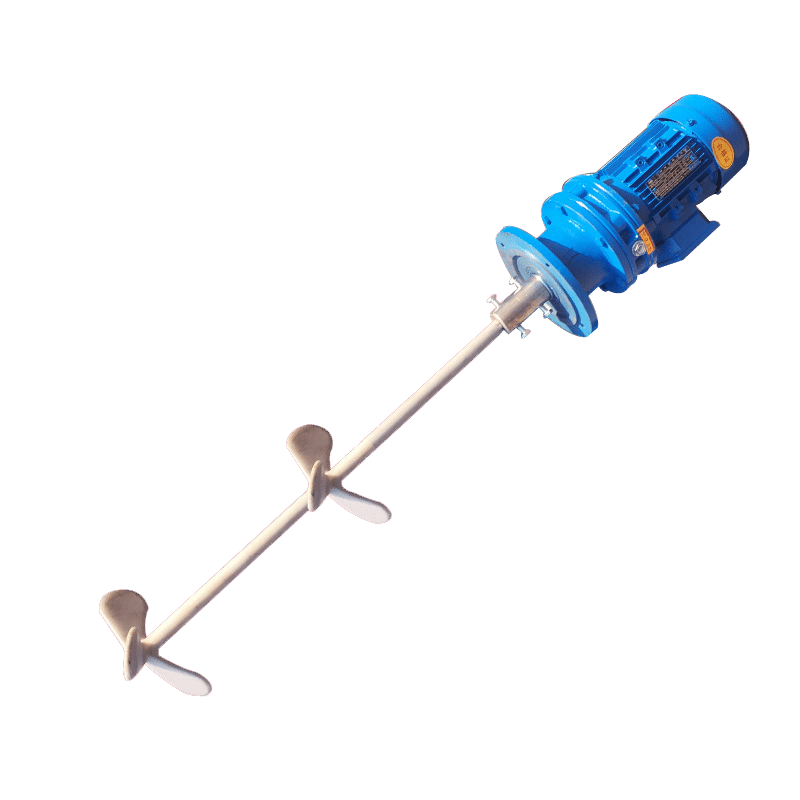
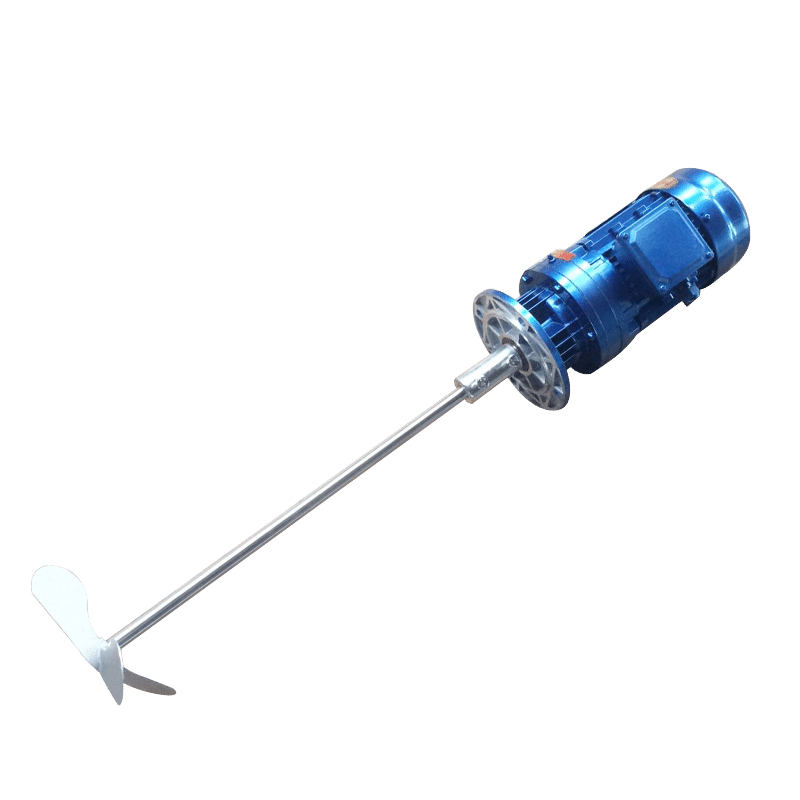
Summary
Agitator tanks are a versatile and efficient way to mix a variety of materials. They are an important part of many industrial processes, and they are used in a variety of parts of the process.
HAOSH handles all aspects through design, requirements, parts, field and customer support to provide mixers, metering pumps, accessories and dosing systems. Please contact HAOSH for equipment quotes or to inquire about solutions.
